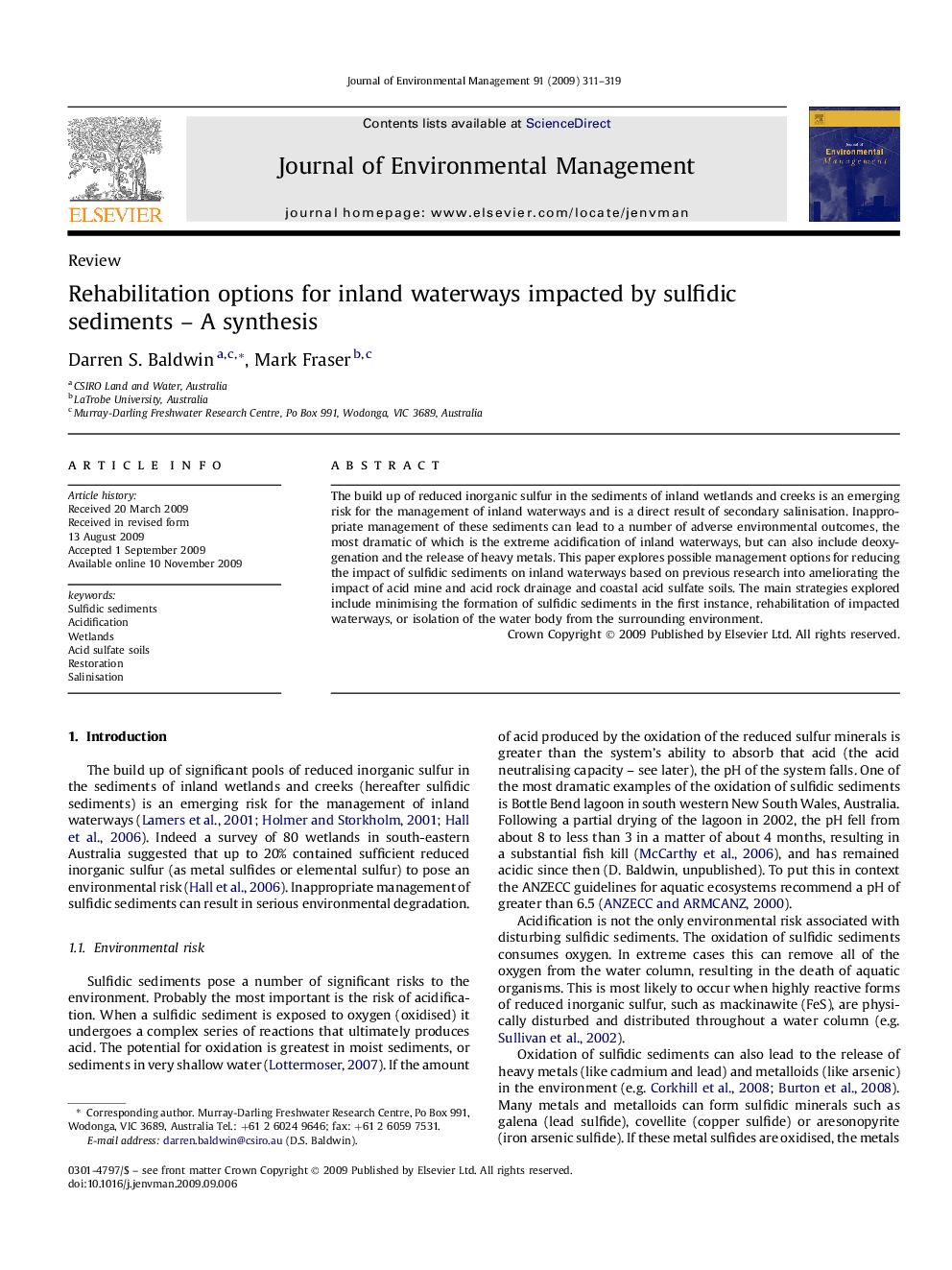| Article ID | Journal | Published Year | Pages | File Type |
|---|---|---|---|---|
| 1057807 | Journal of Environmental Management | 2009 | 9 Pages |
The build up of reduced inorganic sulfur in the sediments of inland wetlands and creeks is an emerging risk for the management of inland waterways and is a direct result of secondary salinisation. Inappropriate management of these sediments can lead to a number of adverse environmental outcomes, the most dramatic of which is the extreme acidification of inland waterways, but can also include deoxygenation and the release of heavy metals. This paper explores possible management options for reducing the impact of sulfidic sediments on inland waterways based on previous research into ameliorating the impact of acid mine and acid rock drainage and coastal acid sulfate soils. The main strategies explored include minimising the formation of sulfidic sediments in the first instance, rehabilitation of impacted waterways, or isolation of the water body from the surrounding environment.
